Vice-President of European Association for Earthquake Engineering (EAEE)
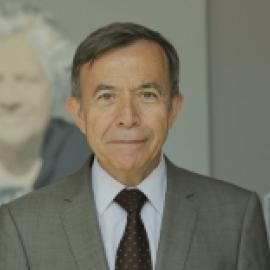
He received his Ph.D. in Geotechnical Engineering from Northwestern University, USA in 1977. He
was promoted to full Professorship in 1988 in Istanbul Technical University. He moved to Kandilli
Observatory and Earthquake Research Institute of Bogaziçi University in 2002. Since March 2012, he
is professor in the Engineering School of Ozyegin University and Chairman of Civil Engineering
Department.
He has been the Secretary General of the European Association for Earthquake Engineering during
1994-2014; President during 2014-2018 and Vice-President for 2018-2022. He is the Editor in Chief
of the Bulletin of Earthquake Engineering published,12 issues yearly and the book series on
“Geotechnical, Geological and Earthquake Engineering” by Springer since 2002.
His main areas of interest are seismic microzonation methodologies, earthquake scenarios, effects of
geotechnical factors on earthquake damage, cyclic behaviour of clays and sands, liquefaction,
variability of strong ground motion characteristics. He published about 250 articles in conference
proceedings, journals, books and as technical reports in English and Turkish. He was the recipient of
the Third Ord.Prof.Dr. Hamdi Peynircioglu Lecture Award in 1988, given by the Turkish National
Committee on Soil Mechanics and Foundation Engineering, the Third Prof.Dr.Rıfat Yarar Lecture
award in 2015, given by Chamber of Turkish Civil Engineers and Earthquake Engineering Committee
of Turkish Earthquake Foundation and he was the 15 th Prof. Nonveiller Lecturer elected by the
Croatian Geotechnical Society.
Lecture Title: Seismic Microzonation for Damage Mitigation
Former Professor of Rock Mechanics at Politecnico di Torino; Editor of the Rock Mechanics and Rock Engineering Journal
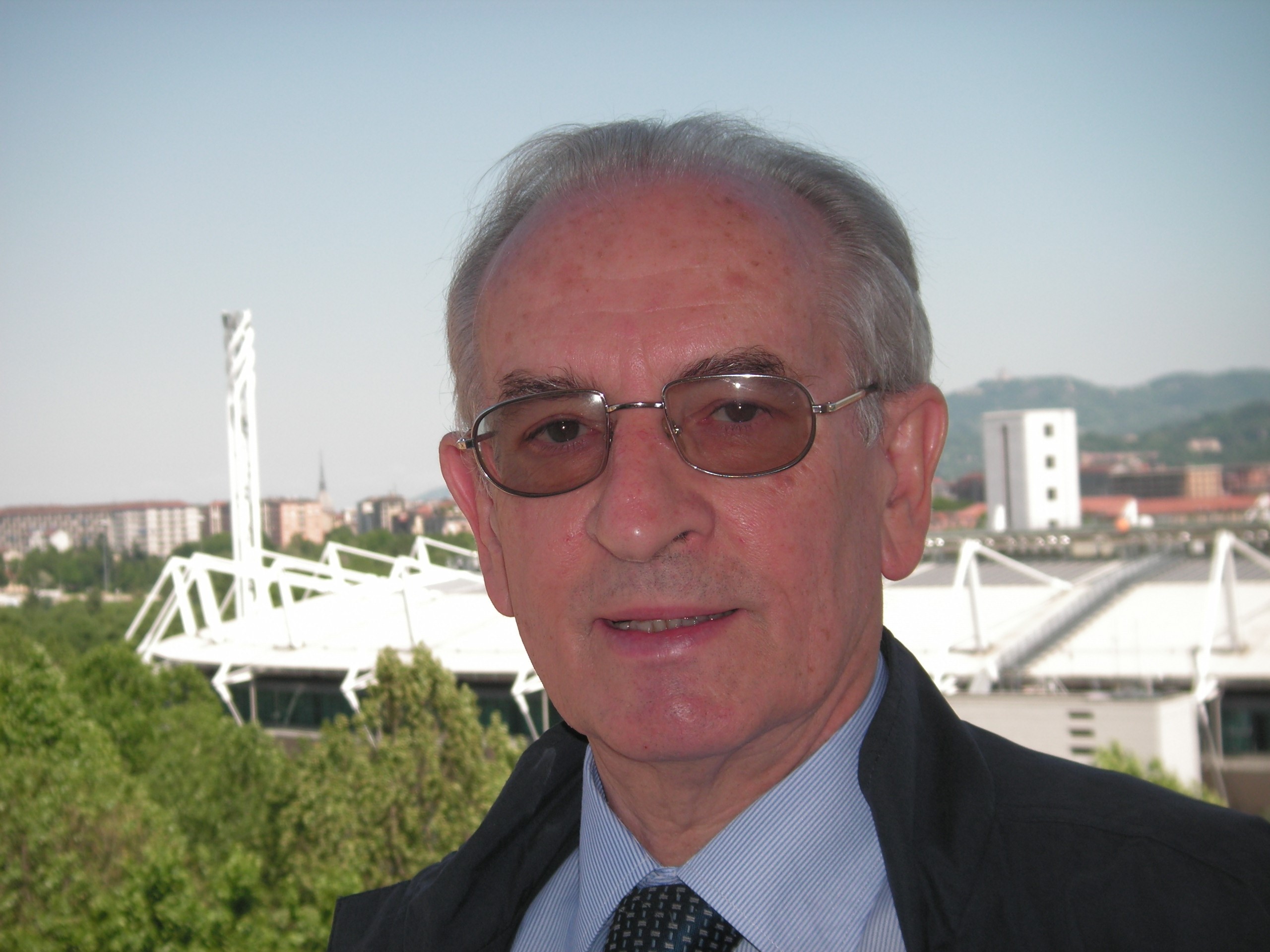
Giovanni Barla, former professor of rock mechanics at Politecnico di Torino, has been head of the Department of Structural and Geotechnical Engineering and vice-president of the School of Engineering. He has been instructor and associate professor at Columbia University, New York.
Giovanni graduated in mining engineering at Politecnico di Torino, obtained the MScEng Degree and the DrEngSc Degree at Columbia University, School of Engineering and Applied Sciences, New York, defending a thesis on the analytical and numerical analysis of stress distribution around underground excavations.
Giovanni Barla has been president of the Italian Geotechnical Association (AGI) and vice-president for Europe of the International Society for Rock Mechanics and Rock Engineering, ISRM. Giovanni is editor of the Rock Mechanics and Rock Engineering Journal. He received the ISRM fellow nomination, the IACMAG award for outstanding contributions, and the emeritus membership of AGI. He is honorary professor of Chongqing and Tianjin University and a member elected of the Torino Academy of Science.
The research interests of Giovanni Barla span over a variety of topics in the fields of rock mechanics, tunnel engineering, rock slopes and dam engineering, numerical methods in geomechanics. He is among the small group of European researchers who studied and applied the finite element method in the field of rock and soil mechanics since the early developments of the technique. He is author and co-author of more than 300 papers, which cover subjects such as laboratory and in situ testing, rock mass characterization and classification; numerical modelling; performance monitoring and back analysis; rock slopes; tunnels and caverns.
Giovanni Barla is also an active international consultant. His activity is strictly related to his studies, providing valuable hints for pursuing new research topics, and brought him to become, during the nineties, principal and member of the International Board of Golder Associates. The projects in which he acted as designer, geotechnical consultant or responsible of the numerical studies are numerous and concern a variety of topics in rock engineering, including rock slopes, deep seated rock slides, dam foundations, conventional and mechanized tunnel excavations, and mining engineering.
Giovanni is presently involved in a number of underground projects in Italy and Abroad. He is contributing at the design stage and during construction of the Alpine Base Tunnels and tunnels being excavated in difficult ground conditions, by using both conventional and/or mechanized excavation methods. In these cases rock mechanics an rock engineering concepts are being applied systematically and novel methods for efficient and safe construction underground are being developed. Also, the most interest is devoted to the development of civil protection strategies for rockslide hazard assessment, methods for real time monitoring and early warning, with reference to natural slopes where infrastructures and inhabited areas are located.
Lecture Title: Dealing with Rock Falls in Inhabited Areas
Among the “Grand Challenges for Engineering”, identified by the Expert Committee of the NAE (National Academy of Engineering), one may point out the Impact of rock slopes instabilities on people, man-made infrastructures, and inhabited areas. In relation to this, very important are rock falls that may pose a significant threat on inhabited areas located immediately down-slope. It is to be highlighted that rock falls are a major cause of landslides fatalities.
The purpose of the present lecture is to illustrate first typical rock fall problems with examples taken from practice and personal experience. Advanced and novel investigative methods to study and characterize the rock mass in detail and define the likely modes of rock instability initiation and failure will be considered. Then, the attention will be dedicated to the three-dimensional modelling of the rock fall process down-slope.
Two case studies of high, steep, and jointed limestone rock cliffs in Italy, characterized by the presence of rock volumes of different shape and size, in limit equilibrium conditions, are described in detail. It is highlighted that in both cases the rock volumes when detached from the cliffs, following a series of leaps and bounds down slope, may reach and damage town houses located at the slope toe.
The studies for analyzing the rock cliff stability conditions are presented together with the kinematic simulations of the rock falls down slope considered, also with the intent to find the type and location of the passive measures to be implemented. Depending on the source of instability, being it localized or distributed along the cliff, studies of the structurally controlled mechanisms (e.g. plane and wedge sliding and/or toppling) were undertaken by using Conventional Mapping and Terrestrial Laser Scanning methods.
Distinguished Professor, Energy GeoEngineering Laboratory (EGEL), ANPERC, KAUST

J. Carlos Santamarina (Professor - KAUST) graduated from Universidad Nacional de Córdoba and completed graduate studies at the U. Maryland and Purdue U. He taught at NYU-Polytechnic, U. Waterloo and at Georgia Tech before joining KAUST.
His team explores hydro-chemo-thermo-mechanical coupled processes and advances innovative characterization techniques for soils and fractured rocks, with applications in energy geo-engineering and deep-sea mining. The team’s research results are summarized in two books and more than 300 publications. Former team members are faculty members at more than thirty universities, researchers at national laboratories, or practicing engineers at leading organizations worldwide.
Dr. Santamarina is a frequent keynote speaker at international events, a member of both Argentinean National Academies, and has participated in several Committees of the USA National Academies. He is the recipient of two ASTM Hogentogler Awards, was the 2012 British Geotechnical Association Touring Lecturer, and delivered the 50th Terzaghi Lecture in 2014.
Lecture Title: Long-term response of soils subjected to repetitive loads – Engineering Implications.
Geotechnical structures often experience repetitive loading cycles of all kinds, including: mechanical (wind, waves, pavement, railroad, and foundations), pore water pressure (tidal, pumped hydro), suction (dry-wet cycles), pore fluid chemistry, and thermal cycles (LNG foundations, thermally active piles, exposed rock faces, freeze-thaw).
Repetitive loads can cause significant accumulations of volumetric strain (terminal void ratio) and plastic shear deformation (shakedown or ratcheting), lead to accelerated heat and chemical transport (AC-diffusion), and alter soil properties (from small strain stiffness and compression index to friction angle and hydraulic conductivity). Controlled particle-scale and pore-scale experiments and simulations provide unique insight into underlying mechanisms that explain the observed macro-scale response.
The design of geo-structures needs to consider the influence of repetitive loads on long-term performance, serviceability, and safety. Convenient close-form, first-order engineering estimates are based on asymptotic conditions (e.g., cumulative deformations in soils and rocks, and transport processes). However, complex boundary conditions require numerical simulations. Time-stepping using classical constitutive models is practical for a small number of cycles, but it requires major computational resources when the number of load repetitions is high; furthermore, the accumulation of numerical errors may distort the predicted response. Indeed, engineering projects that involve a very large number of cycles may require a hybrid approach: empirical strain accumulation functions to estimate strain accumulation during repetitive loading complemented with a classical algorithm to satisfy equilibrium and compatibility at selected stages during repetitive loading.
Founding President, General Secretary and Treasurer of the International Association for Computer Methods and Advances in Geomechanics (IACMAG)
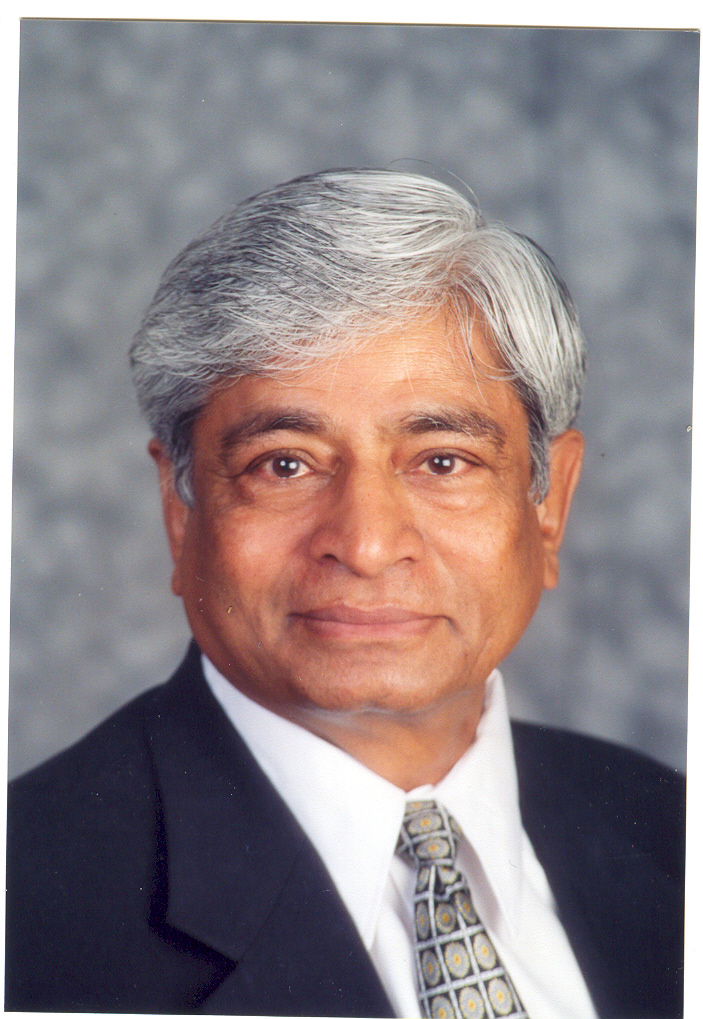
Chandrakant S. Desai is a Regents' Professor (Emeritus) , Department of Civil Engineering and Engineering Mechanics, University of Arizona, Tucson, Arizona. Dr. Desai has made original and significant contributions in basic and applied research in material-constitutive modeling, laboratory testing, and computational methods for a wide range of problems in civil engineering related to geomechanics/geotechnical engineering, structural mechanics/structural engineering, mechanical engineering and electronic packaging. Dr. Desai’s research on the development of the new and innovative disturbed state concept (DSC) for constitutive modeling of geomaterials and interfaces/joints has found significant engineering applications. In conjunction with nonlinear finite element methods, it provides a new and alternative procedure for analysis, design and reliability for challenging and complex problems of modern technology. He has authored/edited about 20 books, 19 book chapters, and has been author/coauthor of over 320 technical papers in refereed journals and conferences.
Dr. Desai’s research contributions have received outstanding recognitions at national and international levels, some of which are indentified as: (a) development and applications of finite element method for problems involving interaction between structures and foundations, (b) the thin-layer interface element for simulation of contacts (interfaces and joints), (c) the Residual Flow Procedure for free surface seepage (d) a novel fundamental approach for microstructural instability including liquefaction, and (e) the disturbed state concept for modeling of engineering materials and interfaces, including thermo-mechanical and rate dependent behavior of materials in electronic chip-substrate systems.
His book on the finite element method (Desai and Abel) published in 1972 was the first formal text on the subject in the USA, second in the world. In 1979 he authored the pioneering and the first text for teaching the finite element method to undergraduate students. His book on Constitutive Laws for Engineering Materials (Desai and Siriwardane) in 1984 is considered to be the first on the subject that presented a combination of various material models based on continuum mechanics. In 2001, he authored the book on the Disturbed State Concept (DSC) that presents an innovative concept for modeling materials and contacts in a unified manner, combing the continuum mechanics models and a novel idea for introducing the discontinuities in the deforming material. In 1977 he co- edited (Desai and Christian) including his own contributed chapters, the first book on Numerical Methods in Geotechnical Engineering that deals with problems from geotechnical and structural engineering. In 20013-14 he has coauthored (Desai and Zaman) the book, Advanced Geotechnical Engineering: Soil-structure Interaction using Computer and Material Models, which is unique because of its scope, contents and connection between research and applications.
He was the founding General Editor of the International Journal for Numerical and Analytical Methods in Geomechanics from 1977-2000. He is the founding Editor-in-Chief of the International Journal of Geomechanics, published by Geo Institute, ASC, 2001-2008, and now he serves as its Advisory Editor. He has served as a member of Editorial Boards of 15 journals, and has been chair/member of a number of committees of various national and international societies. He is Founding President of the International Association for Computer Methods and Advances in Geomechanics (IACMAG). He is credited with introducing the interdisciplinary definition of Geomechanics that involves various areas such as geotechnical engineering and rock mechanics, static and dynamics of interacting structures and foundations, fluid flow through porous media, geoenvironmental engineering, natural hazards and earthquakes, landslides and subsidence, petroleum engineering, offshore and marine technology, geological engineering and modeling, geothermal energy, ice mechanics, and lunar and planetary geomechanics.
Dr. Desai has received a number of awards and recognitions, e.g., Fellow, National Academy of Engineering, India; Lifetime Achievement Award, Alumni Association of VJTI, University of Bombay; The Distinguished Member Award by the American Society of Civil Engineers (ASCE); The Nathan M. Newmark Medal, by Structural Engineering and Engineering Mechanics Institute, ASCE; The Karl Terzaghi Award, by Geo Institute, (ASCE); Honorary Professor, University of Nottingham, U.K.; Diamond Jubilee Honor, Indian Geotechnical Society; Suklje Award/ Lecture, Slovenian Geotechnical Society; HIND Rattan (Jewel of India) Award, by Non-resident Society, New Delhi, India; Meritorious Civilian Service Award by the U.S. Corps of Engineers; Alexander von Humboldt Stiftung Prize by the German Government; Outstanding Contributions Medal by the International Association for Computer Methods and Advances in Geomechanics; Outstanding Contributions Medal in Mechanics by the Czech Academy of Sciences; Clock Award for outstanding Contributions for Thermomechanical Analysis in Electronic Packaging by the Electrical and Electronic Packaging Division, ASME ; Five Star Faculty Teaching Finalist Award and the El Paso Natural Gas Foundation Faculty Achievement Award, at the University of Arizona, Tucson, Arizona.
Constitutive Modeling of geologic materials and interfaces Significant for Geomechanics
Behavior of geologic materials, interfaces and joints play the vital role for realistic and economical solutions for geotechnical problems under mechanical and environmental (fluid, thermal, chemical, electromagnetic, etc.) loadings. Characterization of the behavior, refereed as constitutive modeling, requires appropriate basic mechanics and physics, testing (laboratory and field), determination of parameters, validations at the specimen level and at boundary value problem level.
A brief review of available constitutive models will be followed by a description of the unified Disturbed State Concept (DSC). Material behavior involves simultaneous occurrence of factors such as elastic, plastic and creep deformations, volume change, stress path effects, microstructural modifications leading to cracks, fracture, failure, liquefaction, softening or degradation and healing or strengthening. Most available models allow for specific number of these factors, while unified models are desired that allow for, as necessary, simultaneous occurrence of the foregoing factors. The DSC with the hierarchical single surface (HISS) plasticity provides for such unique and versatile unified model.
A number of examples problems involving testing and modeling of a wide range of materials and interfaces like sand, clay, rocks, asphalt, concrete, alloys, silicon involving mechanical, thermal, fluid and chemical effects will be presented. Solutions and validations for practical problems involving laboratory and field measurements using computer (finite element) procedure with the DSC/HISS will be presented. They would include challenging problems in geotechnical, ground improvement, transportation (pavement), earthquake and liquefaction, underground works, seepage and consolidation, composites (electronic packaging), and motion of glaciers and ice sheets.
The importance of appropriate constitutive modeling for realistic solutions in Geomechanics and general engineering cannot be overemphasized.
Professor, Ecole des Ponts ParisTech, Navier-CERMES; Chair of the Technical Oversight Committee of ISSMGE, in charge of supervising the activities of the 32 Technical Committees of the ISSMGE

Pierre Delage, Professor of Geotechnical Engineering at Ecole des Ponts ParisTech where he graduated as Civil Engineer prior to complete his PhD at Mines ParisTech and Université Paris VI. After a two year stay at the University of Sherbrooke (Canada), he contributed, back to France, to the development of CERMES (the geotechnical group of Ecole des Ponts, now included in Laboratoire Navier), that he directed from 2003 to 2010. He developed researches on the fundamentals mechanisms governing the macroscopic response of multi-phase soils and rocks submitted to changes in stress, water content and temperature effects (Thermo-Hydro-Mechanical couplings), with some pioneering contributions on the role of the changes in the pore size distribution in the volume change behaviour of soils, the stress-strain and failure behaviour of unsaturated soils or the thermal response of claystones. His researches concerned various applications related to sensitive clays, deep marine sediments, unsaturated soils, compacted soils, loess, oil reservoir chalks, oil sands, claystones and shales and, more recently, Martian regoliths, in the framework of the forthcoming NASA mission InSight on Mars.
He is a corresponding member of the French Academy of Agriculture, has been Chief editor of the “Revue Française de Géotechnique” and “Géotechnique Letters”. He has been or still is member of various editorial panels (Géotechnique, Computers and Geotechnics, Geotechnical Testing Journal, Geomechanics and Geoengineering, Rivista Geotecnica Italiana). He organised, with E. Alonso, the 1st Int. Conf. on Unsaturated Soils in Paris (1995), played an active role in the 18th Int. Conf. on Soil Mechanics and Geotechnical Engineering (Paris 2013) and chaired the 3rd European Conf. on Unsaturated Soils (Paris 2016). He serves since 2013 as Chair of the Technical Oversight Committee of the International Society of Soil Mechanics and Geotechnical Engineering, in charge of supervising the activities of the 32 Technical Committees of the ISSMGE, under both Roger Frank and Charles Ng’s Presidential terms.
Lecture Title: On the Thermal Behaviour of Clays and Claystones
Particular attention has been paid for some time to thermal issues in soils and rocks, with respect to the storage of high activity exothermic radioactive waste at great depth. This field also concerns various Geo-energy issues, like the behaviour of thermal piles, heat storage in the ground, the burial of high voltage cables, non-conventional oil production and ground-atmosphere interactions. Whereas advanced in-situ experiments have been carried out in some underground research laboratories excavated in clays and claystones in Belgium, France and Switzerland, rather few laboratory data about the thermo-hydro-mechanical behaviour of claystones are available in the literature. Thermal testing of clay rocks actually requires adopting some soil mechanics concepts, concerning in particular saturation procedures and drainage conditions. Based on the use of specifically developed novel experimental devices, new data concerning the thermo-poro-elastic characteristics, the thermal volume changes (with special interest devoted to plastic thermal contraction), and thermal pressurisation issues in various clays and claystones from Belgium (Boom clay), France (Callovo-Oxfordian claystone) and Switzerland (Opalinus Clay) are presented. These new data are of significant importance in the assessment of the stability and long-term performance of radioactive waste disposal systems in clays and claystones.
Prof. Dr. Eng. M. Hesham El Naggar, Ph.D., P.Eng., M. CSCE, F. EIC, F. ASCE
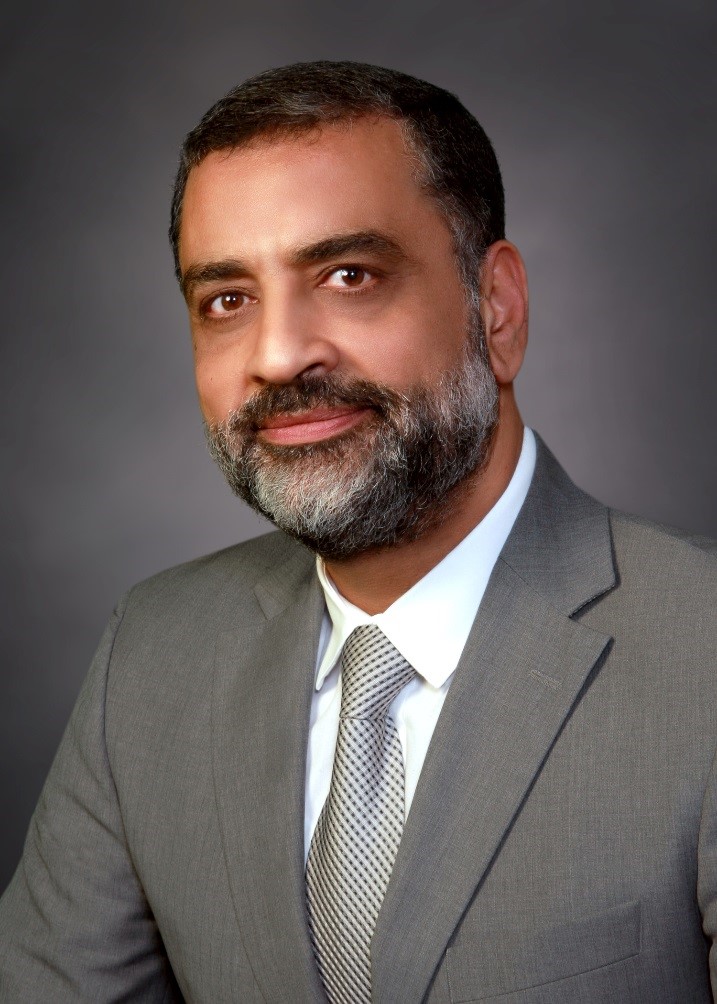
Dr. El Naggar is a Professor of Engineering at Western University, Canada. He is Editor-In-Chief of Soil Dynamics and Earthquake Engineering and Associate Editor of the Canadian Geotechnical Journal. He published more than 400 technical papers/book chapters on foundations, soil-structure interaction, infrastructure and geotechnical earthquake engineering.
He consulted on major projects worldwide involving power plants, petrochemical plants, cement plants and mining facilities as well as port and offshore structures.
He received numerous awards including: Geosynthetics, Stermac, Meyerhof, Canadian Geotechnical Colloquium Speaker, Western Faculty Scholar, Outstanding Teaching, and Research Excellence Awards as well as the 2015 Ontario Professional Engineers Medal for Engineering Research & Development. He is an elected Fellow of Engineering Institute of Canada and the American Society for Civil Engineers.
Geo-Structural Nonlinear Analysis of Piles
Pile foundations are utilized to support a variety of important infrastructure where they are subjected to static and/or dynamic lateral loads due to lateral earth pressure, vessel impacts, traffic, waves, wind, and earthquakes. The pile lateral behavior under extreme lateral loading is governed by two main factors: the interaction between the pile and surrounding soil; and the material inelasticity of the pile itself.
This presentation covers the state-of-the-art of modeling the nonlinear response of piles. In addition, it describes the recent development of an efficient and robust approach for the analysis of piles based on the Beam on Nonlinear Winkler (BNWF).
In this work, a general cyclic BNWF model is developed to account for the important features of soil-pile interaction problem including lateral load characteristics, soil cave-in, soil-pile side shear, gap formation, and strength and stiffness hardening/degradation.
The inelastic behavior of pile material is also modeled effectively by implementing the advanced fiber technique. The capability of the developed model in predicting the response of piles under lateral static, cyclic and seismic loading is validated by comparing the computed results with experimental data.
Vice President and Vice Chancellor for Research and Technology Transfer of the University of Houston and the University of Houston System, respectively

Amr Elnashai is the Vice President and Vice Chancellor for Research and Technology Transfer of the University of Houston and the University of Houston System, respectively. He was Dean of Engineering at the Pennsylvania State University, USA, and the Harold and Inge Marcus Endowed Chair in Engineering before joining Houston. Before being dean of engineering at Penn State, he was head of the Civil and Environmental Engineering Department at the University of Illinois at Urbana-Champaign. Amr is a fellow of the UK Royal Academy of Engineering and fellow of the American Society of Civil Engineers as well as the UK Institution of Structural Engineers. He is author/co-author over 145 journal publications and 4 books and many other reports and publications. He advised 45 PhD students to graduation, and over 100 MS thesis students.
Lecture Title: Coupled Fire and Earthquake Analysis of Steel Buildings
Fire following earthquakes has caused very significant damage and loss of life in previous earthquakes. This presentation introduces an analysis environment that provides versatile and realistic assessment of the combined earthquake and fire effects on steel building frames. The advanced inelastic dynamic analysis platform ZEUS-NL is extended to conduct thermal stress analysis after large deformations and damage have been suffered by the structure. The deformed shape at the end of the earthquake is used as the initial condition for subjecting the structure to non-uniform temperature gradients that are varying with time. This second analysis may also be followed by another dynamic analysis under the effect of earthquake aftershocks. Examples of application are provided from previous earthquakes as well as experimental investigation. The tool presented is an open-source advanced analysis code that is available for use worldwide.
Professional Global Expert of Geotechnical Engineering
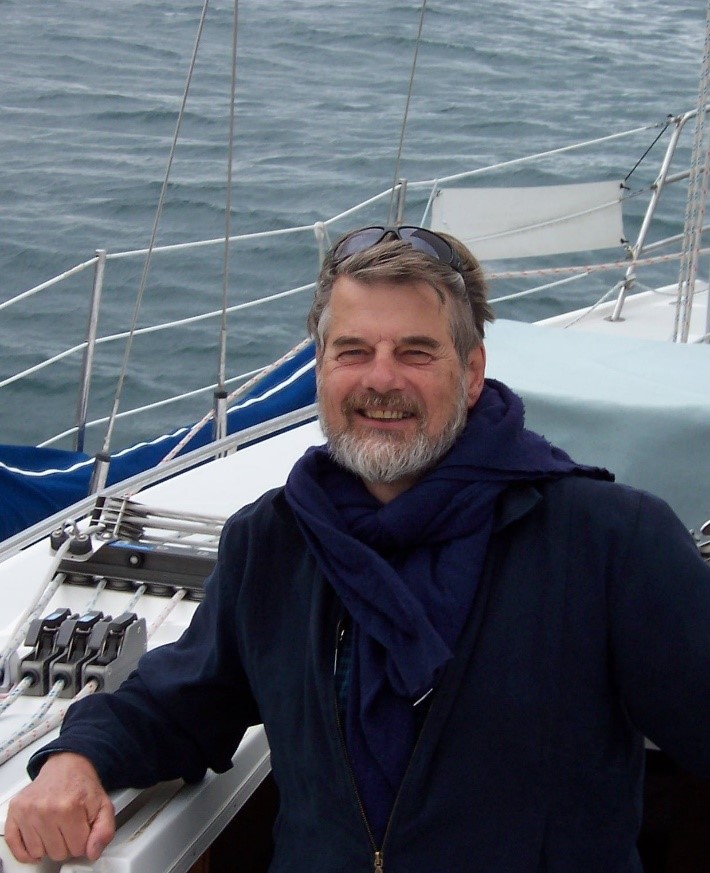
Dr. Bengt H. Fellenius is a professional engineer specializing in foundation design and studies by participation in project teams, special investigations, instrumented field tests, etc. Services are also provided in regard to construction problems, claims, and litigation in collaboration with Consultants and Contractors, as well as Owners. Dr. Fellenius, Professor of Civil Engineering at the University of Ottawa from 1979 through 1998, is an internationally recognized authority in the field of soil mechanics and foundation engineering, and, in particular, in deep foundations. He has gained a wealth of practical experience during more than 50 years of work at home and overseas through a variety of assignments that encompass foundation, embankment, and soil improvement design for water and sewage treatment plants, industrial plants, as well as bridges, highway, and airport projects, and marine structures and urban area development projects; some of which he has written up in 300+ technical journal and conference papers, articles, books, and book chapters. Copies of many of the papers are available for downloading from Dr. Fellenius' web site: [www.Fellenius.net] Dr. Fellenius moved from his native Sweden to Canada in 1972 where he worked on foundation investigations and design and construction projects in North America and overseas. In 1973, he was one of the first to apply geotextile soil separation sheets to stabilize roadbeds and construction surfaces, investigating conventional carpet underlay (Celanese) for this purpose. He was active in promoting to the US market the splicing of prestressed concrete piles by means of mechanical full-strength splices, and he introduced to Canada and the USA ground improvement applications of lime column method for reducing soil compressibility and wick drains (the Geodrain and Alidrain) for accelerating consolidation and stabilizing landslides. He was one of the earliest (1977) to research and use dynamic testing and the Pile Driving Analyzer in actual project design and construction. In 1984 he introduced the Janbu method of determining soil compressibility and analysis of settlement. He has also had a fundamental part of the development of commercial software for analysis of settlement from loads on natural soils and soils subjected to soil improvement methods, design of piled foundations, and other software. In 1984, he published the design and analysis method for foundation design known as the “Unified Method of Design for Capacity, Drag Force, Settlement, and Downdrag”. Dr. Fellenius is and has been an active participant in many national and international professional societies and research associations and in Canadian and US Codes and Standards Development. For example, Member of the subcommittee for the American Society for Testing and Materials D-4945 Standard for High-Strain Dynamic Testing of Piles; Chairman of the Canadian Geotechnical Society, CGS, Technical Committee on Foundations writing the 1985 Canadian Foundation Engineering Manual; Member of the Ministry of Transportation Committee for the Development of the 1983 and 1992 Ontario Bridge Design Code; Author of three Public Works Canada publications: Marine Division Master Specifications for Piling, Pile Design Guidelines, and Hammer Selection Guide; Past Overseas Correspondent Member to the Geotechnical Engineering Advisory Panel of the Institution of Civil Engineers, ICE (London); and Past Member of Editorial Board for the ASCE Geotechnical Engineering Journal. Dr. Fellenius has given lectures and courses to several universities and been invited lecturer at international conferences throughout Europe, the Americas, and South-east Asia.
Lecture Title: Wick-drain acceleration of settlement and piled raft foundation response for a container port
Professor, Bogazici University, Turkey
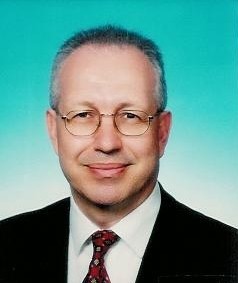
Dr. Erol Guler is a full professor of geotechnical engineering at Bogazici University, Istanbul, Turkey since 1989. He acted as the Director of Environmental Sciences Institute of Bogazici University between 1996 and 1999 and as the Chairman of the Civil Engineering Department between 2004 and 2010. He was a visiting Fulbright Professor at the University of Maryland between 1989 and 1991. Prof. Guler is the leading geosynthetic scientist in Turkey, having been an IGS Member since 1989. He founded the IGS Turkish Chapter in 2001 and served as its president until 2005, and was reelected as President again in 2011. He was the organizer for the first two national geosynthetic conferences in 2004 and 2006 and is currently the chairman of the organizing committee of the 2016 European Regional Conference of IGS, EuroGeo6. Prof. Guler has been a member of the International Standards Organization (ISO) Technical committee on geosynthetics as a representative of the Turkish Standards Institute since 2002. He is currently the Convener of the WG2 of ISO/TC221 (Technical Committee on geosynthetics) and is also the Convener of the WG2 of CEN-TC189 (European Committee for Standardization’s Technical Committee on geosynthetics). Prof. Guler is currently an international member of the USA TRB Committee on Geosynthetics. Prof. Guler’s research has focused mainly on geosynthetic reinforced walls and specifically he conducted research on the use of marginal soils in such structures and their behavior under earthquake loading conditions. His research work includes numerical studies as well as shaking table tests and full scale tests. In addition to his research work, Prof. Guler has extensive practical experience, including design work for numerous projects where geosynthetics were used as reinforcement or liners.
Examples of Geotechnical Design of Complex Buildings and Infrastructure in Turkey and Innovative Solutions Using Geosynthetics
In this presentation examples of challenging geotechnical design examples will be presented. These will include deep excavations (up to 40 m deep) immediately next to existing structures. A series of complex design issues like a deep excavation next to a tunnel and shaft, or an overpass bridge on piled foundations immediately between existing metro lines will be reported. Also foundation issues of large building complexes constructed on steep slopes will be reported. In all the examples the importance of 3D Numerical Modeling and instrumentation will be emphasized. The investigation of a massive and deep seated landslide will be reported and lessons learned will be shared. Finally innovative solutions achieved with geosynthetics will be reported. These will include application of geosynthetic reinforced walls and slopes and soil improvement with the help of Geosynthetic Encapsulated Columns.
UC Davis professor emeritus of geotechnical engineering

I.M. Idriss, a UC Davis professor emeritus of geotechnical engineering, was on the second floor of a San Francisco high-rise when the 6.9 magnitude Loma Prieta earthquake struck on Oct. 17, 1989. As colleagues dove for cover beneath a conference table, Idriss stood in a doorway … where he had a perfect view of buildings swaying in response to the forces he had studied throughout his career.
“Each earthquake tells us a story,” Idriss explained, during an interview given on the 20th anniversary of this catastrophe. “Sometimes it confirms something we know, or sometimes it tells us something we didn’t know.”
In the wake of the Loma Prieta quake, Idriss was one of eight people named to Gov. George Deukmejian’s Board of Inquiry; the panel was assigned to find out why the Cypress section of I-880 and a section of the San Francisco-Oakland Bay Bridge had failed … and how the state could prevent this from happening again. Idriss and his fellow panel members eventually recommended that all of the state’s approximately 24,000 bridges be inspected for quake-worthiness and — if necessary — retrofitted.
Following this inquiry, Idriss and several other UC researchers continued to work with Caltrans, serving on the state’s Seismic Advisory Board and on peer advisory panels for all the Bay Area toll bridge retrofit projects.
Idriss has spent half a century studying how soils react to the shaking that occurs during an earthquake. During that time, his geotechnical advice has been sought by government agencies and advisory panels around the world. He has been involved with the follow-up analysis of every major earthquake since the 1964 Alaska quake, including those at San Fernando, Mexico City, Northridge and Kobe; he has been part of the team of engineers that descends on a region in the aftermath of a major quake, to analyze damage and determine causes of structural collapse.
Loma Prieta was, however, the only quake he experienced in person.
His research on soil mechanics and foundation engineering has influenced the construction of dams, nuclear power plants, seaports, office buildings, residences, hospitals, railways and bridges around the world.
In 1999, Idriss received a UC Davis Distinguished Public Service Award, an honor that recognizes faculty members who have made public service contributions to the community, state, nation and world throughout their professional careers. This followed his 1989 election to the National Academy of Engineering, and the many high honors he has received from the American Society of Civil Engineers.
Recognizing the value of such awards, Idriss subsequently established one himself: the UC Davis Prize for Excellence in Geotechnical Engineering — now known as the Idriss Award — which recognizes a graduate student’s achievements in outstanding scholarship, leadership and fellowship.
Lecture Title: Review of current field-based procedures for assessing triggering of liquefaction in cohesionless soils during earthquakes
Distinguished Professor Buddhima Indraratna, Centre for Geomechanics and Railway Engineering, University of Wollongong, Australia
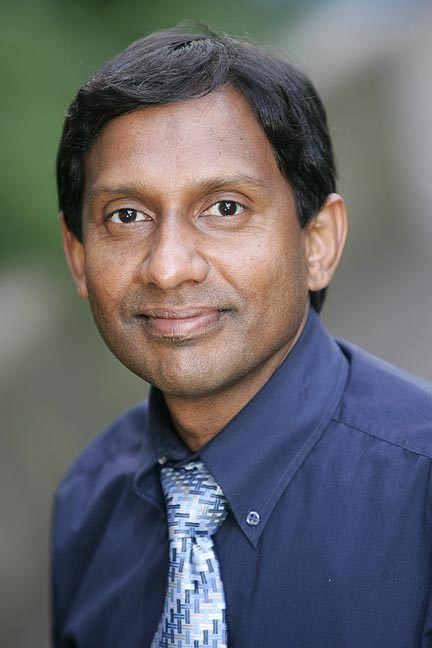
Distinguished Professor Buddhima Indraratna is a Civil Engineering graduated from Imperial College, London, and obtained his PhD from the University of Alberta in 1987. He pioneered the fields of modern railway geomechanics and soil improvement in early 1990s and brought Australia to the top of the world stage in these fields within a decade. His innovations in unique equipment for prototype process simulation, formulation of track degradation techniques that are adopted now in worldwide standards through rigorous computational methods for design and analysis, and cutting-edge scientific solutions to some major industry challenges facing heavy axle high-speed rail, have made him an internationally renowned expert and a highly sought after consultant. Prof Indraratna’s significant contributions to ground improvement and railway engineering have been acknowledged through numerous national and international awards, including the Inaugural Ralph Proctor Lecture and 4th Louis Menard Lecture of ISSMGE, Thomas Telford Premium in 2015, EH Davis Memorial Lecture of Australian Geomechanics Society in 2009, and the Engineers Australia Transport Medal in 2011. Last year, he received the highest honor from the International Association for Computer Methods and Advances in Geomechanics, “The Outstanding Contributions Medal”. He is a Fellow of the Australian Academy of Technological Sciences and Engineering, Fellow of American Society of Civil Engineers, and Fellow of Institution of Engineers Australia.
Lecture Title: Application of Geo-inclusions for Sustainable Rail Infrastructure under Increased Axle Loads and Higher Speeds
Given the increasing demand for faster trains for carrying heavier loads, current ballasted railroads require considerable upgrading. As a response, this keynote reflects the state-of-the-art developments in track geomechanics, based on large-scale laboratory tests, computational modelling and field measurements where improved performance of ballast by geosynthetics (e.g. geogrids and geocells), as well as energy-absorbing rubber mats and infilled recycled tyres is examined. Full-scale monitoring of instrumented tracks supported by rail industry has been carried out, and the field data obtained for in situ stresses and deformations could verify the track performance, apart from validating the numerical simulations. This presentation will also focus on the role of geo-inclusions in reducing ballast degradation and subgrade soil fluidization through R & D innovations from theory to practice, facilitating enhanced rail design and construction principles to cater for higher speeds and heavier freight.
University Professor and Chair of Geotechnical Engineering at the Technical University of Darmstadt
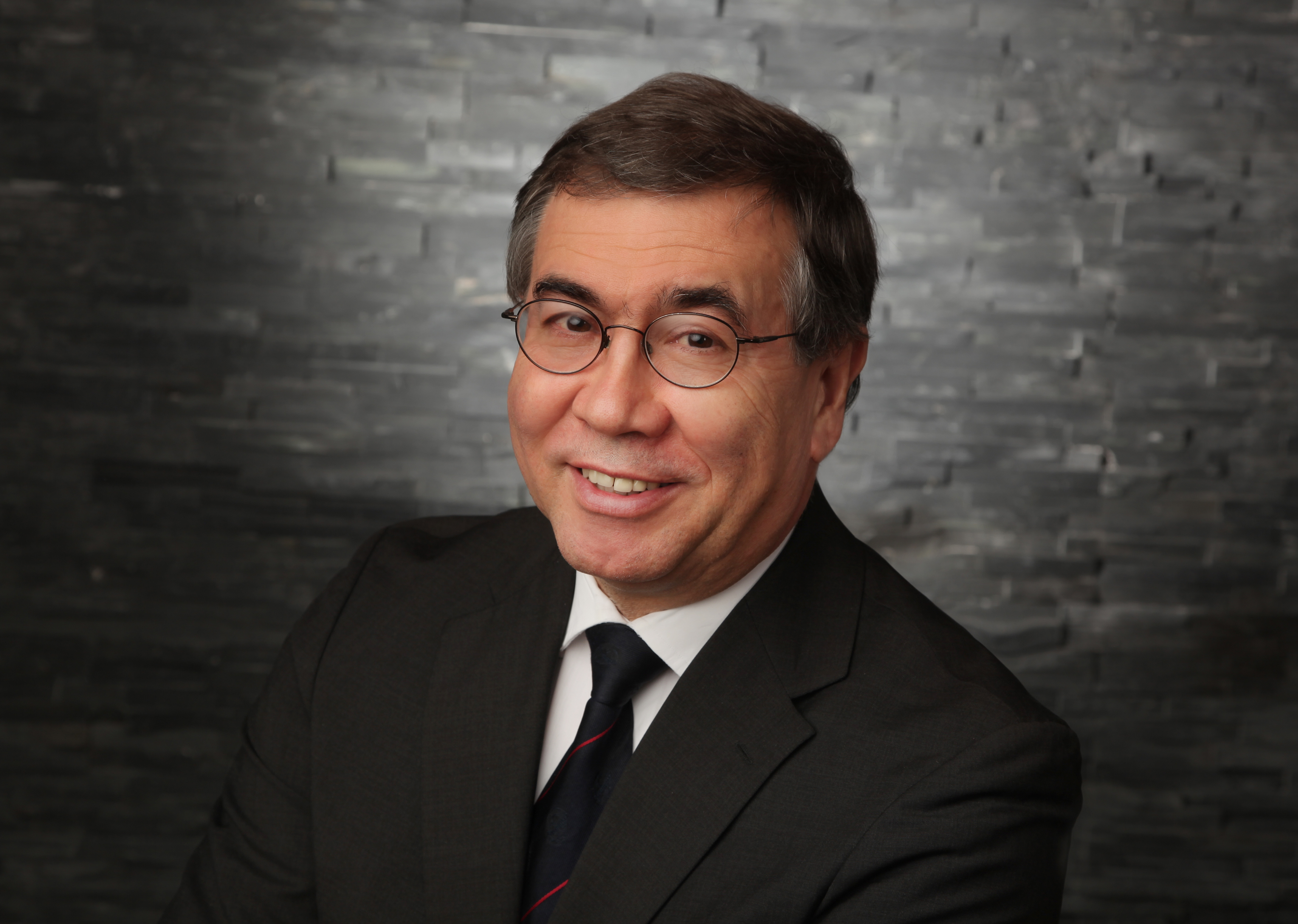
Director of the Institute and the Research Institute for Geotechnical Engineering of the Technical University of Darmstadt, Managing Partner, publicly appointed and sworn expert for geotechnical engineering, Inspector of earthworks and foundation engineering according to Building Regulations, Consulting Engineer. He was the chairman of International Technical Committee TC 18 "Deep Foundations" of the International Society for Soil Mechanics and Geotechnical Engineering (ISSMGE),
Former Chairman of the International Technical Committee TC 5 "Environmental Geotechnics" of the International Society for Soil Mechanics and Geotechnical Engineering (ISSMGE),
Member of the Board of the International Consortium on Landslides (ICL) and Member of the Editorial Board of Landslides,
Member of the editorial board of the International Journal of Geoingineering Case Histories,
President of the ELGIP European Network of Excellence (Europen Large Geotechnical Institutes Platform),
former Chairman of CEN Committee 341 "Geotechnical Investigation and Testing" of the European Committee of Standardization,
Leading member of the GeoTechNet European R & D Network (Geotechnical Network on polluted land),
Chairman of the Technical Committee "Environmental Geotechnics" of the German Geotechnical Society (DGGT) sometimes geothermal research,
Member of the DIN Standards Board, Department 05 "Foundation, Geotechnical Engineering",
Board member of the German Geotechnical Society (DGGT),
Chairman of the Advisory Board for Earthworks and Foundation Engineering, based at the Federal Chamber of Engineers in Berlin, for the approval of test experts,
Member of the Steering Committee of the Building Standards Committee (NABau) in DIN, Department 05 "Foundation Engineering, Geotechnical Engineering",
Member of the Executive Board of the German Construction Engineering Day,
Head of the Department of Environmental Geotechnics including Geothermal Energy of the German Geotechnical Society (DGGT),
Member of the scientific advisory board of the Center for German and International Building and Building Law (CBTR),
Member of the Advisory Council of the Underground Transportation Company (STUVA).
Lecture Title: Advanced new Methodology for the Identification of Stiffness and Strength of
Weak Rock as Basis for economic Foundation Design
Vice-President for Europe of ISSMGE (2017-2021)
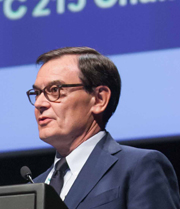
Mario Manassero obtained his Civil Engineering degree in 1980 at Politecnico di Torino and received his Ph.D. at the same university in 1987. He has been visiting professor at University of Ancona (Italy) from 1988 to 1993, Ghent University (Belgium) in 1996 and at Colorado State University (USA) in 1995. Since 1998, he has been professor of Geotechnical Engineering at Politecnico di Torino.
He has been chairman of Technical Committee (TC) no. 215 "Environmental Geotechnics" of the International Society for Soil Mechanics and Geotechnical Engineering (ISSMGE) for the period 2001 to 2014 and a member of the expert consulting board of the Italian Ministry of the Environment for the Environmental Impact Assessment of major national projects from 2008 to 2012.
His main research activities are devoted to the characterization of soil deposits by in-situ tests, soil improvement and reinforcement methods, containment systems for landfills and polluted subsoils, vacuum extraction of subsoil pollutants and the mechanical behavior of municipal and industrial solid wastes. He has also addressed more fundamental topics like the chemo-physical interaction between pore fluids and the solid skeleton of active clays, the multiphase coupled flows and the associated subsoil pollutant transport phenomena.
He has been invited lecturer in a number of international conferences and academic celebrations. Among them it is worth to mention the State of the Art Lecture on Environmental Geotechnics, at the Millennium Conference “GEOENG2000” jointly organized by ISSMGE, ISRM e IAGEA, Melbourne, Australia (November, 2000).
He has been appointed as the second R. Kerry Rowe Lecturer by ISSMGE TC 215 and the Lecture was delivered at the 19th International Conference on Soil Mechanics and Geotechnical Engineering (ICSMGE), Seoul (Corea), 2017.
He was involved un many committees for the preparation of guidelines and regulations, at national and international level, concerning civil engineering and environmental aspects and he was member of the Italian Geotechnical Society Committee, AGI-UNI-SC7, for the National Application Norm of the Eurocode n. 7 “Geotechnical Design” (CEN).
As far as his professional activity is concerned Mario Manassero was involved in many landmark engineering projects such as the protection of the Venice lagoon, the reclamation and rehabilitation of the Rome International Airport area, the stability assessment of the red mud tailing basin at Portoscuso (Italy), the pollutant containment diaphragm wall at Cengio (Italy) and the design of the Messina Strait bridge foundations and anchor blocs. He has also been geotechnical consultant of the Victoria State Environmental Protection Agency (Australia), contributing to the environmental planning for landfill locations as well as to the landfill design guidelines.
He has authored, co-authored and/or edited five books and more than 150 technical and scientific papers in journals and conference proceedings.
Lecture Title: MODERN DESIGN APPROACH FOR LANDFILL LINERS
The design of landfill bottom barrier systems on the basis of their performances requires the modelling of the pollutant transport processes, while taking into consideration both advective and dispersive-diffusive phenomena. This modelling can be developed in the context of an environmental and health risk assessment, which allows the specific vulnerability of the site to be taken into account. A calculation procedure, based on closed-form analytical solutions, which can be considered suitable for a second-level risk analysis type, according to the ASTM and USEPA classifications, is presented in this paper. This procedure, although based on a very simple and intuitive conceptual model, is able to provide useful indications for design choices, at least in the preliminary dimensioning phase of a project.
Embassy of Italy in Cairo (Egypt) – Scientific and Technological Attaché
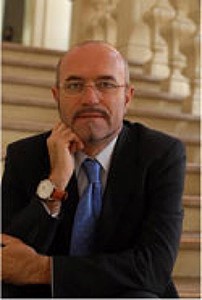
Claudio Margottini is Scientific and Technological Attaché at the Italian Embassy in Cairo (Egypt), vice President of the International Consortium on Landslides, UNESCO Consultant and adjunct Professor at the UNESCO Chair in the University of Florence.
He is trained as a Geologist (Rome 1979) and Engineering Seismologist (UK London, 1983) and has pursued an Italian Government Agencies career (ENEA and ISPRA-Dpt Geological Survey of Italy) and an academic career as adjunct Professor of Engineering Geology for Cultural Heritage (Modena University, Italy 1999 - 2011) and adjunct Professor of Foundamentals of Geothermal Energy and Thermogeology at Huangzou University (Wuhan, China 2012-2016).
In the last 20 years, as Engineering Geologist, he was extensively supporting UNESCO and local institutions in many international project for the conservation of Cultural Heritages in Afghanistan (Bamiyan, Jam, Heart and Zohak), Ethiopia (Aksum and Lalibela), South Korea (Seokguram), Syria Maaloula), Peru (Machu Picchu), Bolivia (Tiwanaku), Georgia (Vardzia and Katski), Chile (Easter Island), Jordan (Petra), North Korea (Kogurio), Mongolia (Bayannuur), Nepal (Lumbini and Swayambu) and others.
Currently is also responsible for the interpretation of remote sensing data (radar interferometry) in the site of Pompei (Italy) and Scientific Coordinator of a EU project for the investigation of the natural hazard and monitoring present trends with radar interferometry, in the European UNESCO sites. The collaboration with UNESCO has also included studies for understanding the role of geology in shaping historic urban landscapes. Author and co-author of more than 300 publications and books.
Lecture Title: Satellite radar interferometry for the protection of Cultural heritage from geo-hazards: the PROTHEGO project
Professor. Ruhr-Universität Bochum, Germany
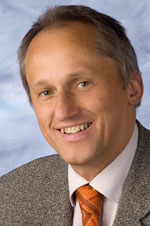
Prof. Günther Meschke is the chair of the Statics and Dynamics at Ruhr-University Bochum. He received PhD degree in constructive engineering at Vienna University of Technology. He became professor at the Institute for Statics and Dynamics at the Ruhr-University Bochum since 1998.
His research and professional practice are primarily related to numerical structural mechanics, multi-field and multi-scale models for materials, numerical algorithms for multi-field simulations, numerical models for short and long-term damage and degradation of materials, implementation of industrial R&D projects and scientific consultancy in the design and calculation of supporting structures and reports on damage etc.
In last 30 years, Prof. Günther Meschke has produced nearly 300 scientific essays and (co-)organized over 40 scientific conferences and minisymposia. His honors include Award of the City of Vienna for science and Kardinal Innitzer Studienfonds. Prof. Günther Meschke is a member of the North Rhine-Westphalian Academy of Sciences and Arts, the German Academy of Engineering Sciences(Acatech), the Austrian Academy of Sciences (Acatech) and the Austrian Science Council.
Lecture Title: Advanced Computational Models for Design and Construction in Urban Mechanized Tunneling.
FRSC, FCAE, FEIC, FCSCE, FASCE, FISHMII, FIFCC, FIABSE, FRSA
Founder President of the International Society for Structural Health Monitoring of Intelligent Infrastructure (ISHMII)
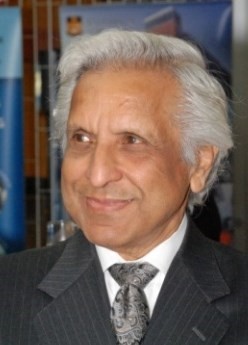
Dr. Aftab Mufti is an Emeritus Professor of Civil Engineering at the University of Manitoba, Winnipeg, Manitoba, Canada. He is the Founding President of the International Society for Structural Health Monitoring of Intelligent Infrastructure (ISHMII). He is also the former Scientific Director and President of the Innovative Structures with Intelligent Sensing Canada Research Network, a Network of Centres of Excellence. His research interests include FRPs, FOSs, FEM, bridge engineering, Structural Health Monitoring (SHM). At the University of Manitoba he introduced new research area of Civionics Engineering to monitor deteriorating infrastructure. He has authored or co-authored 5 books, plus provided chapters for 2 others, edited 9 books, and written more than 350 technical publications. Dr. Mufti is the recipient of 24 awards. He is the holder of several patents on the steel-free bridge deck concept, of which he is the principal developer. He has been involved in the writing of bridge design codes since 1992, and was the Chair of the Technical Sub-Committee on the Fibre Reinforced Structures of the Canadian Highway Bridge Design Code, published in 2006. He is a fellow of 9 societies. On November 2013 he was elected as a Fellow of the Royal Society of Canada (FRSC) and on July 1, 2010 he was appointed as a Member of the Order of Canada, highest civilian honour bestowed on Canadian citizens, for his contribution to and leadership in the field of civil engineering, notably for researching the use of advanced composite materials and fibre optic sensors in the construction and monitoring of bridges and other infrastructures.
Lecture Title: Structural Health Monitoring (SHM) and Civionics Enhances the Evaluation of the Load carrying Capacity of Ageing Bridges in Canada
Dean of the Faculty of Engineering and the Environment at the University of Southampton

I am a Professor of Geotechnical Engineering and Dean of the Faculty of Engineering and the Environment at the University of Southampton.
My main technical areas of interest are: 1- transport infrastructure 2- sustainable waste and resource management, underpinned by an understanding of fundamental soil behaviour.
I was elected a Fellow of the Royal Academy of Engineering in 2009 in recognition of my work in these areas. I am also Geotechnical Consultant to the internationally-leading groundwater control company, WJ Groundwater Ltd. I am committed to sustainability in daily life, especially in the key areas of transport and resource management. I cycle to work most days, and, wherever possible, re-use and recycle goods and materials.
Lecture Title: Fibre reinforcement of railway ballast
It is known that the addition of randomly placed fibres can improve the strength and ductility of granular materials such as sands. The talk will discuss recent developments in the application of the technique to railway ballast, including
monotonic and cyclic triaxial tests on scaled reinforced ballast
establishment of an appropriate mechanical framework to explain the observed behaviour
tests on full size railway ballast in a full-width sleeper bay, carried out in the Southampton Railway Testing Facility, and
initial results of a full-scale field trial.
The mechanical behavioural framework is based on a consideration of the additional effective stress applied to the granular skeleton as tensions in the fibres develop; and the laboratory tests are used to assess suitable relative fibre to grain dimensions and proportions, and to optimise the fibre shape. The approach is shown to have the potential to reduce the development of plastic track settlements, and hence maintenance needs.
Distinguished Professor and Associate Dean - Research, College of Engineering, University of Texas at Arlington (UTA), USA
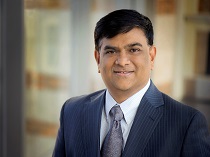
Dr. Anand Puppala (PE, Fellow-ASCE, Diplomate in GE) currently serves as Associate Dean - Research in College of Engineering since 2012 and is a Distinguished Teaching and Scholar Professor in the Civil Engineering department at the University of Texas at Arlington (UTA) in Texas, USA. Dr. Puppala is the current Chair of Soil Mechanics section of Transportation Research Board (TRB)’s Design and Construction group and is a member of ASCE - GI’s Technical Coordination Council (TCC). He served as a President for United States Universities Council on Geotechnical Education and Research (USUCGER) from 2007-2009.
Dr. Puppala has been serving as the director of an organized research center of excellence, Sustainable and Resilient Civil Infrastructure (SARCI) at UTA since 2014 and this center also hosts NSF’s Industry University Cooperative Research Program’s Composites in Civil Infrastructure Site (CICI) at UTA. Both SARCI and CICI research groups have been conducting research on sustainable utilization of recycled materials, dams and embankments, stabilization of expansive soils, and others in fields related to transportation. His on-going research studies focusing on remote sensing applications using LIDAR on bridge infrastructure monitoring to earthen embankment systems as well as developing asset management strategies incorporating advanced statistical principles of risk and reliability concepts.
Dr. Puppala has been a recipient of several major research grants totaling well over $12.5 Million from federal, state and local government agencies. Currently, he is co-PI on a USDOT-FHWA’s Dwight David Eisenhower Transportation Fellowship Program (DDETFP) - Hispanic Serving Institutions Fellowship grant to recruit both graduate and undergraduate students to work in various fields of Transportation sector. Dr. Puppala has supervised 26 Doctoral and 52 Masters’ thesis students and published well over 370 papers in fields close to highway infrastructure.
Dr. Puppala received many teaching and research awards including 2013 UTA Distinguished Researcher award and 2010 UT System’s Regents Teaching Award. Dr. Puppala is the current Chair of Soil Mechanics section of Transportation Research Board (TRB)’s Design and Construction group and is a member of ASCE - GI’s Technical Coordination Council (TCC). He served as President of United States Universities Council on Geotechnical Education and Research (USUCGER) from 2007-2009. He also serves as an editorial member of several esteemed journals including ASCE Journal of Geotechnical and Geoenvironmental Engineering and ASCE Journal of Materials.
Ettringite Induced Heaving in Stabilized High Sulfate Soils
Stabilization of expansive soils using lime and cement additives have been used by practitioners over the years. However, recent heaving and premature pavement failures in lime and cement-treated subgrades containing sulfates led to questioning the validity of calcium based stabilization. When expansive soils containing sulfates are treated with calcium-based stabilizers, the calcium from the stabilizer reacts with soil sulfates and alumina to form the expansive mineral Ettringite. Formation and growth of the mineral Ettringite has been reported as the cause of severe heaving in several pavement failures. Under certain environmental conditions, Ettringite transforms itself into another expansive mineral, Thaumasite. This mineral is also known to induce significant soil heaving. Annually millions of dollars are spent to repair pavements distressed by this ettringite induced heaving.
Several theories have been proposed to understand the heaving mechanisms in sulfate bearing soils. Based on the theoretical background, researchers and practitioners have proposed various methods to treat sulfate soils. Applicability of these methods is mostly limited to soils containing sulfate content less than 8,000 ppm. Soils with sulfate content above 8,000 ppm are termed as ‘high sulfate’ soils, and chemical treatment of such soils is currently not considered. A research study was designed to aid in understanding the heaving phenomenon in soils with sulfate contents above 8,000 ppm and to develop practical techniques to sabilize such soils. Six soils: four high plasticity clays, one low-plasticity clay soil and one high-plasticity silt, with sulfate contents varying from 200 ppm - 44,000 ppm, were considered for this research.
Chemical and mineralogical tests were performed on the untreated soils to establish the clay mineral distribution and composition of the soils. The present high-sulfate soils were treated with lime stabilization with varying mellowing periods and treated soils were then subjected to the engineering and chemical tests. Tests results were analyzed to understand the effectiveness of mellowing period on the heaving phenomenon of ‘high sulfate’ soils. Both Ettringite formation and crystal growth have contributed significantly to the overall swell of the treated soils.
Swell trends observed in the treated soils at respective mellowing periods were attributed to the variability in sulfate levels and reactive alumina and silica contents. Treated soils at higher mellowing periods showed lesser sulfate induced heaving when sulfate levels are lesser than 30,000 ppm. At higher sulfate levels, the mellowing did not result in effective treatment of soils. It was also observed that compaction void ratios and soil clay mineralogy have a significant impact on the swell behavior of chemically treated high-sulfate soils at different mellowing periods. This keynote paper provides a comprehensive review of stabilization of high sulfate soils and methods studied to mitigate sulfate heaving in them.
Technical Advisor, Gregg Drilling & Testing Inc., USA and Gregg Canada Ltd.
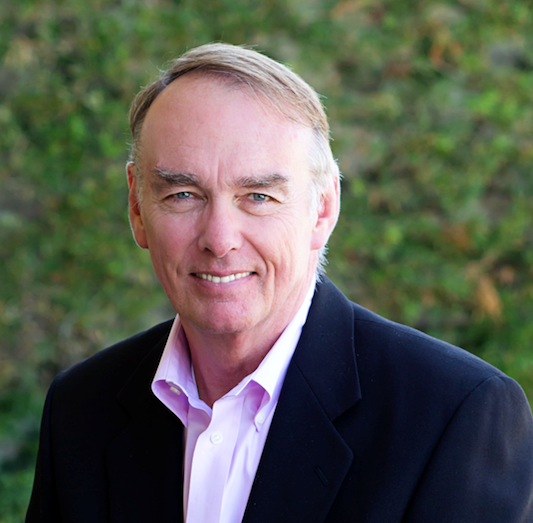
B.Sc. (Nottingham, U.K.) (1972)
M.A.Sc. (British Columbia, Canada) (1975)
Ph.D. (British Columbia, Canada) (1983)
Dr. Peter Robertson brings more than 40 years experience as an educator, researcher, consultant and practitioner specializing in the areas of in-situ testing and site investigation, earthquake design of geotechnical structures, and soil liquefaction. Peter is recognized as an expert both nationally and internationally in the areas of in-situ testing and soil liquefaction. He has been a consultant to various industrial clients and insurance companies in North America, Asia and Europe for projects involving liquefaction evaluation for major structures, stability of on-shore and off-shore structures, landslides, stability of natural slopes and tailings dams, and use and interpretation of in-situ tests. He is the co-author of the primary reference book on Cone Penetration Testing (CPT). He has also authored or co-authored over 250 publications as well a popular CPT Guide that is freely available via the several websites. Peter has also assisted in the development of several inexpensive CPT-based interpretation software programs and has presented a series of free webinars in an effort to enhance education and practice. Peter continues to provide private consulting to a wide range of clients.
CPT-based Soil Behavior Type (SBT) Classification System
Geotechnical engineers use classification systems to group soils according to shared qualities or characteristics based on simple cost effective tests. The most common soil classification systems used in geotechnical engineering are based on physical (textural) characteristics such as grain size and plasticity. Ideally, geotechnical engineers would also like to classify soils based on behavior characteristics that have a strong link to fundamental in-situ behavior. However, existing textural-based classification systems have a weak link to in-situ behavior since they are measured on disturbed and remolded samples. The cone penetration test (CPT) has been gaining in popularity for site investigations due to the cost effective, rapid, continuous and reliable measurements. The most common CPT-based classification systems are based on behavior characteristics and are often referred to as a Soil Behavior Type (SBT) classification. However, some confusion exists since most CPT-based SBT classification systems use textural-based descriptions, such as sand and clay. The presentation will provide an update of popular CPT-based SBT classification systems to use behavior-based descriptions. The update includes a method to identify the existence of microstructure in soils and examples are used to illustrate the advantages and limitations of such a system.
President of the Austrian National Committee of ISSMGE
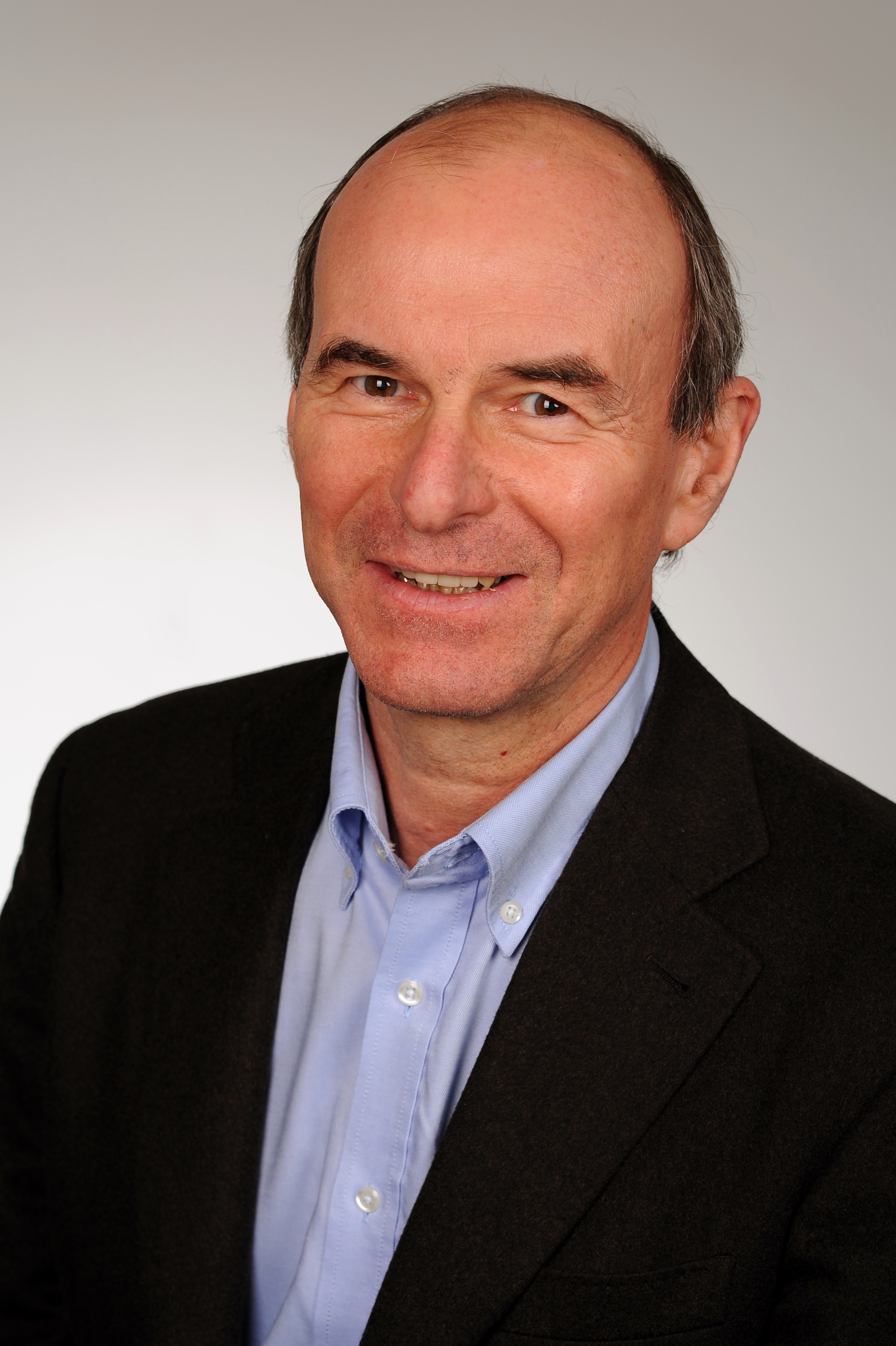
Prof. Helmut F. Schweiger is Head of the Computational Geotechnics Group at the Institute of Soil Mechanics, Foundation Engineering and Computational Geotechnics of the Graz University of Technology in Austria and has over 25 years of experience in developing and applying numerical methods in geomechanics. He studied Civil Engineering at the Graz University of Technology and obtained his Ph.D. form the University of Wales, Swansea, UK. His main research interests are the development of multilaminate models for soils and the assessment of the influence of the constitutive model for solving practical problems, in particular deep excavations, deep foundations and tunnels. Application of numerical methods in accordance with the design approaches defined in Eurocode7 is another topic he is involved in. His group was a member of several research projects funded by the European Commission. His research is reflected in more than 250 publications in International Journals and Conference Proceedings and invitations to keynote and plenary lectures at International Conferences on Soil Mechanics and Computational Geotechnics. He serves on a number of editorial boards of international journals, including Geotechnique and Computers and Geotechnics, and was chairman of 6th European Conference on Numerical Methods in Engineering. He is Vice-chair of the ISSMGE Technical Committee TC103 „Numerical Methods” and Chairman of the European Technical Committee ERTC7 „Numerical Methods in Geotechnical Engineering”. In 2005 he received the "Excellent Contributions Award Regional" of the International Association for Computer Methods and Advances in Geomechanics, the "Best Paper Award" of the Japanese Geotechnical Society and in 2010 the "George Stephenson Medal" of the Institution of Civil Engineers, London, UK for a paper published in Geotechnique. In 2018 he delivered the Szechy Lecture of the Hungarian Geotechnical Society. He is the president of the Austrian Society for Soil Mechanics and Geotechnical Engineering.
Lecture Title: Examples of successful numerical modelling of complex geotechnical problems
Over the last decades numerical methods have gained increasing importance in practical geotechnical engineering and it can be stated that numerical methods have become a standard tool in geotechnical design, widely accepted by the geotechnical profession. The advantages of numerical analyses for solving practical problems has been recognized and developments in software and hardware allow their application in practice with reasonable effort. However, there is still a gap between practice and research and, often unnecessary, oversimplifications are still made in practice and therefore the full power of numerical analyses is not always utilized. One reason for this discrepancy is a lack of transfer of knowledge from research to practice but also a lack of theoretical background of numerical methods, constitutive modelling and modern soil mechanics in practice. In this paper the application of advanced numerical models for solving practical geotechnical problems is shown whereas the examples have been chosen in such a way that different aspects are highlighted in each case.
Results from fibre-optic measurements for a pull-out test of a ground anchor in soft soil could be reproduced by employing advanced constitutive models, in particular for the grout, in the bonded length of the anchor. For this test a class-A prediction has been made and numerical results have then been compared with in-situ measurements. The back-analysis of a slow moving landslide is presented where the rate of deformation is influenced by water level changes in a reservoir for a pumping power plant, creep of lacustrine sediments and environmental effects such as rainfall infiltration. Finally some results of modelling cone penetration testing in silts are presented highlighting the effects of anisotropic permeability and partial drainage.
Head of Civil and Environmental Engineering Dept., Colorado State University, USA

Charles D. Shackelford is Professor and Head of the Department of Civil and Environmental Engineering, Colorado State University, Fort Collins, Colorado, USA. He has 31 years of experience pertaining to the geoenvironmental aspects of waste management and environmental remediation, and has served as an expert on waste disposal issues on numerous occasions for private companies and federal agencies. Dr. Shackelford's research is focused primarily on evaluating flow and transport of hazardous liquids and contaminants through soil and geosynthetic containment barriers commonly used in geoenvironmental containment applications (e.g., landfills, surface impoundments, lagoons, secondary containment of above-grade fuel storage tanks, etc.), as well as through soil-bentonite vertical cutoff walls used for in situ control and containment of polluted groundwater. His most significant contributions have related to characterizing diffusion of potential contaminants through these barrier materials, and his research contributions pertaining to the role of diffusion in containment barrier design were recognized in 1995 with the receipt of the Walter L. Huber Civil Engineering Research Prize from the American Society of Civil Engineers (ASCE). Dr. Shackelford has authored or co-authored more than 170 peer reviewed publications, and his publications have been cited more than 5900 times with an h-index and i10 index (Google Scholar) of 42 and 110, respectively. He also has served as an Editor for both the ASCE Journal of Geotechnical and Geoenvironmental Engineering, and Elsevier's Journal of Hazardous Materials, and currently serves as an Editorial Board Member of Elsevier's Geotextiles and Geomembranes and as an Associate Editor of the Canadian Geotechnical Journal. Dr. Shackelford has given 99 presentations in the USA, Puerto Rico, and 15 other countries. In 2013, his career contributions to the field of Environmental Geotechnics were recognized through his receipt of the inaugural R. Kerry Rowe Honorary Lecture for Environmental Geotechnics by the ISSMGE. Dr. Shackelford was elected as a Fellow of ASCE in 2015. His MS and PhD degrees are from the University of Texas at Austin in 1983 and 1988, respectively.
Sustaining Chemical Containment with Enhanced Bentonite-Based Barriers
Engineered bentonite-based barriers are often used to contain chemicals waste streams. Examples of these barriers include soil-bentonite vertical cutoff walls, compacted mixtures of bentonite and other natural soil, usually sand, geosynthetic clay liners comprising bentonite sandwiched between two geotextiles, and highly compacted bentonite buffers used for radioactive wastes. The use of bentonite in these barriers stems form the ability of the bentonite to swell upon hydration, thereby producing a low hydraulic conductivity. Although these barriers generally are able to attain a suitably low saturated hydraulic conductivity (typically < 1x10-11 m/s) based on permeation with water or dilute chemical solutions, permeation of these barriers with more concentrated chemical solutions typically representative of practical applications can result in adverse interactions between the bentonite and chemical solutions resulting in unacceptably high hydraulic conductivities. As a result, significant study is being undertaken to evaluate the use of enhanced (e.g., chemically modified) bentonites as substitutes for traditional bentonite in bentonite-based barriers to both enhance and sustain chemical containment. This presentation summarizes the results of studies focused on determining the effects of chemical modification on the primary engineering properties that govern flow and transport through enhanced bentonites, including hydraulic conductivity (k), the effective diffusion coefficients (D*), and the membrane efficiency or chemico-osmotic efficiency coefficient (w). Enhanced bentonites generally exhibit superior transport properties (lower k, lower D*, higher w) when subjected to solutions with elevated chemical concentrations. However, exceptions exist, and the improved engineering behavior of an enhanced bentonite may not always be sustainable. Based on the results, several mechanisms governing the behavior of enhanced bentonites are hypothesized.
Chairman & Executive President, CARPI TECH, Switzerland
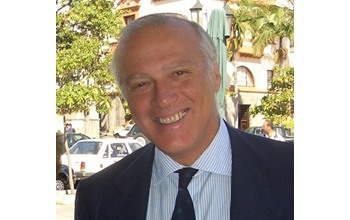
A.Scuero graduated in Hydraulic Civil Engineering at Turin Polytechnic in Italy. After working for major civil engineering construction companies in Italy and Africa, in 1986 he joined CARPI, a private Dutch group that works in the field of waterproofing with geosynthetics. He has been involved in research on geomembrane technologies, for which he invented and holds several patents, in design and application of waterproofing geomembrane systems to all types of hydraulic structures, including 120 large dams. He was the coordinator of the ICOLD European Working Group who prepared ICOLD Bulletin 135 on Geomembrane Sealing Systems for Dams.
Lecture Title: Geomembranes for underwater rehabilitation of hydraulic structures
Chairman of the Board of the German Society of Geotechniques (DGGT)

1998: Managing Director Keller Grundbau GmbH: Responsible for all activities in Germany.
2000: Managing Director Keller Holding GmbH: Operational responsibility Continental Europe, Middle East including Africa-Asian activities (CEMEA) in business development and introduction of advanced technologies and methods.
Since 2003: Board Member Keller Group plc., London:
2003 - 2011, Executive Director responsibility for CEMEA Division
2012 - 2016, Executive Director Group Engineering & Operation
Since 2017: Consulting Engineer Geotechnical engineering and operations
Since 2002: Lecturer at Technische Universität Darmstadt (Prof. Dr.-Ing. R. Katzenbach) on special subjects in geotechnique, ground improvement, grouting and jet grouting.
2003 - 2014: Member of the Board of the German Society of Geotechniques (DGGT)
Since 2006: Chairman of the friend´s association of Geotechnical Institute Technical University Darmstadt
Since 2014: Chairman of the Board of the German Society of Geotechniques (DGGT)
LECTURE TITLE: GROUND IMPROVEMENT AS ALTERNATIVE TO PILING – EFFECTIVE DESIGN SOLUTIONS FOR HEAVILY LOADED STRUCTURES
Emeritus Professor of Geological Engineering,
Colorado School of Mines

As a faculty member at the Colorado School of Mines since 1972, Dr. Turner’s research has concentrated on how computers and spatial information technologies can impact geological, engineering, hydrogeological, and environmental studies, and how such new applications can influence society at large. Following a 1988 sabbatical research visit to the Netherlands, he has pioneered 3D subsurface geological modeling, beginning with serving as chairman of a NATO-sponsored Advanced Research Workshop in Santa Barbara, California, the first international conference devoted to 3D Modeling and Geoscientific Information Systems. This research continued in the USA in connection with the proposed Yucca Mountain nuclear waste repository and at a series of European conferences. These research interests resulted in Dr. Turner’s appointment as Chair in Engineering Geology at Delft University of Technology in The Netherlands (1999-2002), where he gained experience with geological and geotechnical engineering challenges resulting from proposed new uses of underground space and in 2001 chaired a European Science Foundation Conference “New Paradigms in Subsurface Prediction” at Spa, Belgium. Current research interests include the use of new sensor technologies and web-based information management and collaboration procedures for geological hazard analysis and risk assessment.
Dr. Turner has served on several committees of the National Academy of Sciences, including: Mapping Science Committee (1997-2003), and Committee on Geological and Geotechnical Engineering (2005-2009). Throughout his career, Turner has actively supported the Transportation Research Board (TRB); he has chaired a series of TRB standing committees dealing with engineering geology and mapping topics, and especially landslides and rockfall hazards. Dr. Turner has received awards from the Environmental and Engineering Geology Division of the Geological Society of America (GSA) and from the Association of Environmental and Engineering Geologists (AEG) for his role as chief editor of two large books published by the National Academy Press for TRB – one on Landslides (in 1996) and one on Rockfall (in 2012). In recognition to his career achievements, Dr. Turner received the 2010 TRB Roy W. Crum Distinguished Service Award, which recognizes outstanding achievement in transportation research and research management. In 2011, Dr. Turner was recognized as a National Associate of the National Academies for his service to TRB. In September 2014, Dr. Turner received the Schuster Medal from the AEG and the Canadian Geotechnical Society in recognition of his leadership in North American geo-hazards research.
Since 2010 Dr. Turner has held an appointment as Visiting Research Associate (VRA) to the British Geological Survey (BGS), a distinction conferred by the BGS and the United Kingdom's Natural Environmental Research Council (NERC) to a very limited number of research scientists. Among his responsibilities, he is chief editor of a new book on Applied Multidimensional Geological Modeling scheduled for publication in 2018.
Lecture Topic: Social and Environmental Impacts of Landslides
The term “landslide” defines the “movement of a mass of rock, debris, or earth down a slope.” However, landslides are not limited either to the “land” or to “sliding.” Landslides are natural phenomena that cause societal disruptions when humans place parts of the built environment in their path. Slope instability along transportation routes and in mountain valleys pose dangers and are a source of considerable economic losses.
Landslide velocities vary over ten orders of magnitude from “extremely slow” to “extremely rapid.” Large numbers of fatalities can be expected from “very rapid” and “extremely rapid” landslides which move faster than a person can run. In contrast, buildings on “very slow” and “extremely slow” landslides may remain in use for hundreds of years with only minimal damage and repair costs. The volumes of landslides similarly range over many orders of magnitude. The product of landslide volume and speed approximates its “power” (or energy). It is a useful measure of the destructive potential of landslides.
Landslides are local events; even the largest and most spectacular landslides exist “under the radar” and rarely result in national disaster declarations. Landslide losses include “direct” and “indirect” costs. “Direct costs” are damages directly attributable to the landslide. “Indirect costs” include travel detours, economic restrictions, and environmental impacts. Indirect costs often equal or exceed the direct costs.
Activities that prevent or reduce the adverse effects of landslides are termed “mitigation.” Mitigation includes structural and geotechnical measures, as well as political, legal, and administrative measures to protect endangered populations. Reducing the global impact of landslides on risk-prone populations and critical infrastructure is an economic, social, and environmental necessity. Loss data show that, while losses are increasing everywhere, the consequences are much higher in developing countries than in developed countries.
Serge VARAKSIN – M.Sc
Past Chairman T.C.211
Core member TC 211 and TC 102

Serge Varaksin was born in 1943 in Belgium.
After completing his civil engineering degree he was admitted on a workstudy program at Northwestern University Evanston - USA. He completed his masters degree under Professor Jorg Osterberg and published his research on relative density below groundwater table in the ASTM, STP 523, Book..
His military duties were done in the laboratory of the Belgian Military school where he discovered the pressuremeter and was assigned the task to perform two pressuremeter borings to 43meter depth by …….hand auger.
He joined the Menard company in 1973 after a short passage by Fondedile Belgium and since then, devoted his career in creating the present network of companies of Menard around the world, applying the ideas of Louis Menard and Jean-Marie Cognon, as Overseas Manager and later Deputy General Manager of this group. He has recently retired but continues to act as expert adviser expert on ground improvement projects and lecturer.
Author of over 50 international publications, he has specialized in ground improvement techniques of Dynamic Consolidation, Replacement, Vacuum Consolidation, CMC, Stone Columns and is developing an analysis of man-made fills not normally consolidated. He has given several keynote lectures on those subjects in international conferences and participated in several touring lectures as organised by the ISSMGE among which Egypt,South Africa,Ghana,Nigeria and delivered key note lectures on most continents.
In 2006, he was given the task to chair of the T.C. 17 on ground improvement by Professor Seco Pinto, Chairman of the ISSMGE and to participate to the state of the art report for the XVII International Conference for Soil Mechanics and Geotechnical Engineering of Alexandria in 2009.
In 2010, he was reconducted as Chairman of the T.C. Ground Improvement by professor Jean-Louis Briaud, President of the ISSMGE and organised in June 2012 with professor J. Maertens and N. Huybrechts an international symposium and short courses on ground improvement attended by over 300 persons from 36 countries.
In 2013, he chaired the ground improvement session at the 18th international conference on soil mechanics and geotechnical engineering in Paris, and presently is core member of the TC 211 and recently the TC 102.
His knowledge of the pressuremeter was an asset to the Apageo Company, manufacture of the Menard equipment and he was retained as scientific advisor.
The State of Practice of In-situ Tests for Design, Quality Control and Quality Assurance of Ground Improvement Works
Serge Varaksin1 and Babak Hamidi2
1- Apageo, ISSMGE TC211 and TC205
2- Menard Oceania, ISSMGE TC211
ABSTRACT
In the state of the art report that was published on ground improvement processes at the 17th International Conference on Soil Mechanics and Geotechnical Engineering in 2009, ground improvement was defined in five categories of which the first three included non-structural techniques without or with non-grout inclusions. This paper will focus on these categories techniques and the most common in-situ geotechnical tests that are used during the geotechnical investigation, quality control and quality assurance phases; i.e. the cone penetration test, standard penetration test, pressuremeter test and dilatometer test.
In addition to the suitability and feasibility of the technique itself, the level of success of any ground improvement programme is also related to the applicability and suitability of the criteria that is to be satisfied and the testing campaign that is to be undertaken to verify the works. Whilst there are numerous ways to define the targets of improvement, experience of the authors indicates that the optimal approach is when acceptance is based on the project’s actual geotechnical requirements rather than on minimum test results. At the same time, ground improvement design parameters can only be properly determined when the ground conditions are correctly comprehended, which is possible through meaningful geotechnical investigation. Similarly, applied treatment can only be confidently verified when testing is able to well relate to acceptance criteria. Hence, tests that are able to predict the acceptance criteria without reliance on experimental correlations and published work from other sites will result in the best engineering practice and confidence is results.
The Secretary of the ICOLD European Working Group who prepared ICOLD Bulletin 135
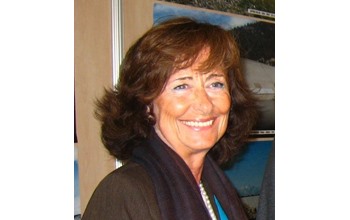
VP - Technical & Marketing Manager, CARPI TECH, Switzerland
Vaschetti graduated in Civil Engineering at the Turin Polytechnic in Italy. After three years as assistant teacher to practical lessons in the same University, she worked as registered professional engineer for private consultants.
In 1992, she joined CARPI, a private Dutch group that works in the field of waterproofing with geosynthetics. She has been involved in the design and tendering phases for application of waterproofing geomembrane systems to all types of hydraulic structures, and in research and development of new application techniques.
She was the secretary of the ICOLD European Working Group who prepared ICOLD Bulletin 135 on Geomembrane Sealing Systems for Dams.
Lecture Title: Geomembranes saving waters in reservoirs and canals
Professor, CNR-IRPI, Italy
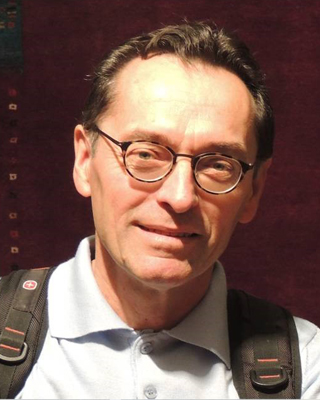
Dr. Janusz WASOWSKI is a research geologist at CNR-IRPI (National Research Council - Institute for Geo-hydrological Protection) in Bari, Italy. He is also the Co-Editor-in-Chief of Engineering Geology. Since 2011 he has held the positions of Visiting Professor at the Research School of Arid Environment and Climate Change, Lanzhou University, Gansu, China and of Science Officer of the Natural Hazards Group Programme, European Geosciences Union (EGU).
He is an internationally recognized scientist in the field of engineering geology, natural hazards and applied remote sensing. For over 25 years Dr. Wasowski’s work has covered a broad spectrum of research topics ranging from slope instability and landslide assessment, collateral seismic hazards, geotechnical field investigation and in situ monitoring, to exploitation of air/space-borne remote sensing and geophysical surveying in engineering geology. He has also served as a consultant for the National Department for Civil Protection, Italy, the Government of Gansu Province, China, and the Centre National de l'Information Géo-Spatiale, Haiti, focusing on landslides and other geohazards and on the application of high resolution satellite multi-temporal interferometry for monitoring terrain deformations and infrastructure instability.
Since 2007 Dr. Wasowski has been a member of the Editorial Board of Engineering Geology (Elsevier) and the Quarterly Journal of Engineering Geology and Hydrogeology (The Geological Society, London). He is the author/co-author of over 100 articles/book chapters and the guest editor of several special issues published in international scientific journals.
Lecture Title: Radar satellite interferometry for monitoring ground and infrastructure instability related to mining and oil/gas field exploitation
Director of the Geotechnical and Heavy Civil Engineering Department at Dar Al-Handasah Consultants (Shair and Partners)
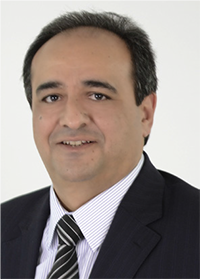
Prof. Dr. Sherif Wissa Agaiby is the Director of the Geotechnical and Heavy Civil Engineering Department at Dar Al-Handasah Consultants (Shair and Partners). Dr Agaiby earned his B.Sc. and M.Sc. degrees from Cairo University, Egypt in 1983 and 1987, respectively, and his Ph.D. from Cornell University, Ithaca, NY, USA in 1991.
Dr. Agaiby taught and conducted research in most fields of Geotechnical Engineering as a university faculty member (Cairo University; 1983 - 2004). Since joining Dar Al-Handasah, Dr. Agaiby has been actively involved in consulting and has participated in the planning, analyzing, designing, and providing during construction follow-up for major engineering projects worldwide.
Dr. Agaiby is involved in many national and international scientific activities including: Chairperson of the Professional Image Committee, International Society for Soil Mechanics and Geotechnical Engineering (ISSMGE), 2013 to 2017; Board Member, Council of Foundation of ITA-CET, Foundation for Education and Training on Tunneling and Underground Space Use; member of the Egyptian Code of Practice for Geotechnical Engineering and Foundations on Rock committee and the Site Investigation committee; member of the Egyptian Code of Practice committee for the Design and Construction of Tunnels and Underground Structures.
Lecture Title: Towards Sustainable Geotechnical Engineering
Sherif W. Agaiby 1 and Sayed M. Ahmed 2
1Director, Geotechnical and Heavy Civil Engineering Dept., Dar Al-Handasah Consultants “Shair and Partners”, 12577 Giza, Egypt
2Associate Professor, Structural Engineering Dept., Faculty of Engineering, Ain Shams University, 11517 Cairo, Egypt
Today, the global awareness of preservation of the environment has become the focal point of many human disciplines. Much of the emerging scientific and engineering efforts are being directed to maintain the harmony between new developments and the important three E’s: Environment, Economy and Equity. Such studies are essentially needed in response to the rise in atmospheric carbon dioxide, global warming, rapid depletion of natural resources and other similar ecological hazards and it is from this context that sustainable engineering came to life. Sustainable engineering aims at ensuring the well-being of the current and future generations with sustainable geotechnics, as a sub-discipline within engineering, covering a wide range of topics related to the sustainable development of civil engineering infrastructure and society. Sustainable geotechnics deals with material recycling, and the utilization of geothermal renewable energy and alternate materials in geotechnical engineering constructions. In this paper, a brief overview of this sub-discipline of geotechnical engineering is presented aiming at connecting the broader scope of sustainability to traditional geotechnical research and practice.
Deputy Head, Inst. for Geotechnical Engineering, Leibniz University of Hannover, Germany
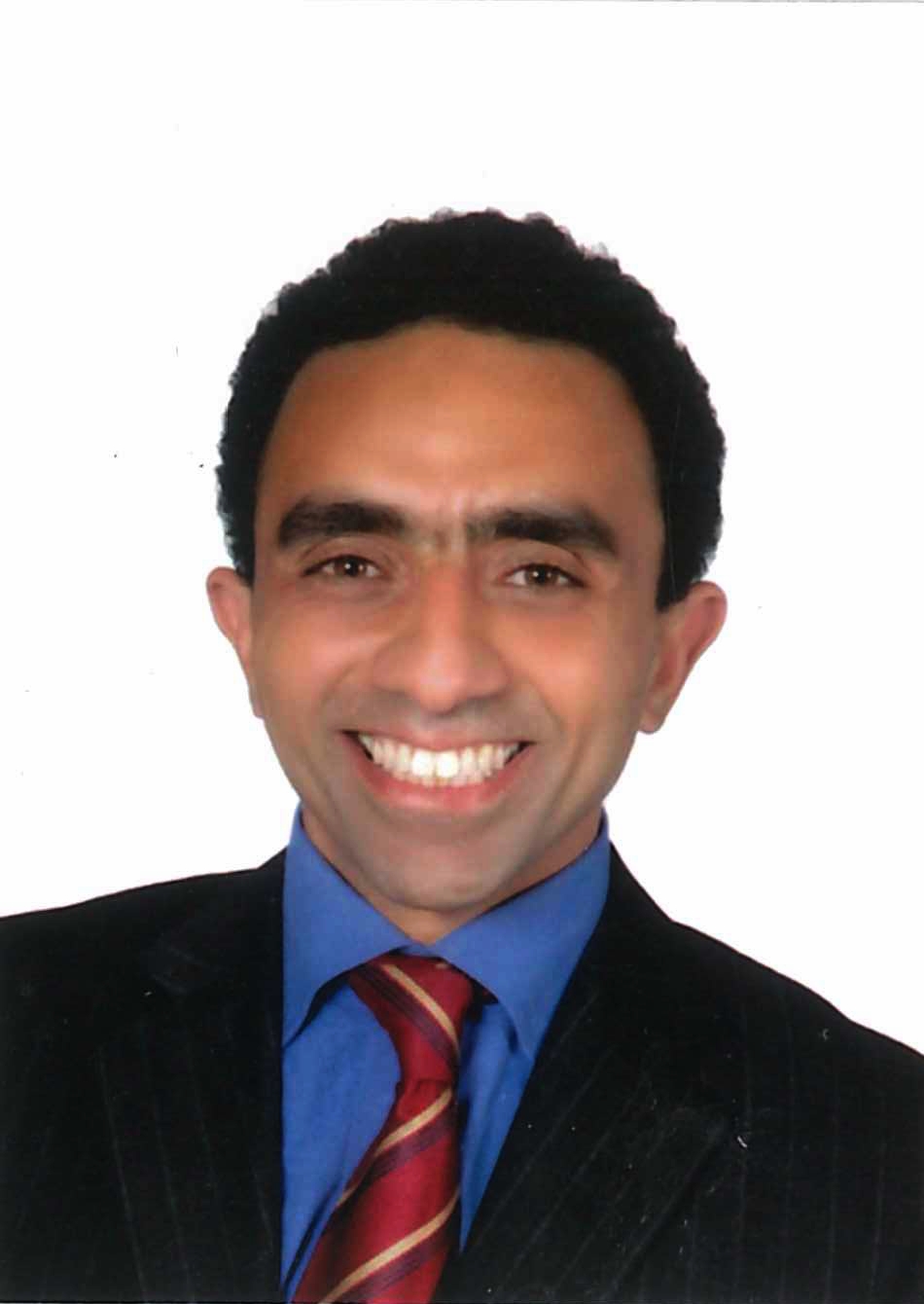
Dr. Abdel-Rahman got his Bachelor degree from Faculty of Civil Engineering - “Ain-Shams University” – Cairo – EGYPT. Afterwards he went to Germany at “University of Hannover”, where he got a master degree with Distinction in “Geotechnique and Infrastructure Engineering” . His PhD study under the excellent supervision of “Prof. Achim Hettler” at University of Dortmund - Germany was finished in a period less than three years. After getting his PhD, he joined the team at at “Leibniz University of Hannover” as Senior Lecturer then he was nominated by the head of the department “Prof. Martin Achmus” to be his “Oberingenieur”-“Deputy Head”.
During his academic career, he published with the Institute for Geotechnical Engineering (IGtH) more than 70 publications mainly in the Numerical Modeling of Foundations Systems for Wind Energy Plants and supervised more that 80 Bachelor and Master theses.
Last but not least, winning in 2016 “Outstanding Paper Award” from the international journal “Computers and Geotechnics” for a paper titled “Behaviour of Monopile Foundations under Cyclic Lateral Loading” with his colleagues Martin Achmus and Yu-Shu Kuo.
Lecture Title: Advanced Numerical Modeling of Large Deformation Analysis for
Geotechnical Problems
Modeling of large deformations was always a challenging task in geotechnical engineering.
Numerical modeling of such issues is usually complex and tricky. The basic problem of
modeling such situations is insufficient formulation of the classical Finite Element Method
(FEM). Mesh distortions that accompany Lagrangian approaches effectively prevent
engineers from obtaining reliable solutions. To overcome the problems accompanied by the
large deformations, new types of formulations were proposed during last decades, such as the
Arbitrary Lagrangian-Eulerian (ALE) method; the Smoothed Particle Hydrodynamics (SPH)
and the Coupled Eulerian-Lagrangian (CEL) method. The basic concepts and features of these
methods are shown. Then, applicability of the CEL method for different geotechnical
problems will be investigated.
The coupled Eulerian-Lagrangian method (CEL) combines both Eulerian and Lagrangian
formulations to analyse complex problems including large deformations, which are generally
not feasible with conventional finite element methods. The geotechnical application of the
CEL method models the soil domain with Eulerian elements and solid structure with
Lagrangian elements and defines the interface of both materials on the boundary of the
Lagrangian body. Then the Lagrangian body can be pushed into the soil Eulerian body which
is allowed to flow around the Lagrangian body with no mesh distortion.
The first problem involves the penetration of Spudcan, which are used as foundations
providing a secure operation of mobile jack-up rigs, into layered subsoil using nonlinear finite
element program (ABAQUS) . Spudcans usually have diameters between 10 m and 16 m, but
anyway the diameter steadily increased in recent decades and sometimes exceeds 20 m and
the penetration is about three times the spudcan diameter. Parametric study will be presented
to examine the overall characteristics of spudcan penetration. The numerical results were
validated against real measurements and different analytical solutions.
The second problem deals with the numerical simulation of vane shear tests in cohesive soils
using three dimensional numerical model with the coupled Eulerian-Lagrangian (CEL)
method. Mobilization of shear stress on the vertical and horizontal surfaces of the vane is studied. Also, the shear stress and rotational moment results obtained from the FE analyses
have been compared with the measured real-field experimental data.
The third problems is mainly focused on the modeling of cone penetration testing (CPT). The
soil stress–strain response has been simulated using the Mohr–Coulomb constitutive model.
The cone is modeled as a rigid body in the simulations. The results of CEL simulations have
been compared with the laboratory and field test results. It is observed that CEL can
successfully simulate cone penetration tests which in turn, facilitates in characterizing soil
stress–strain response. Finally, recommendations regarding further investigations are given.
Prof. Dr.-Ing. Yasser El-Mossallamy
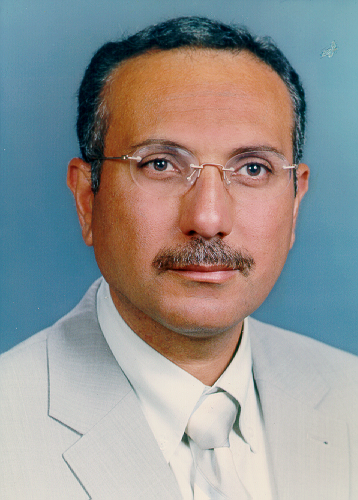
Prof. Yasser has been a researcher and consultant since 32 years. His work includes among others the application of numerical modeling and analyses in geotechnical projects. He has a wide experience by the design and construction of raft and piled raft foundations of high-rise buildings and bridge foundation. He was also involved in many projects dealing with special measures to increase stability of landslides, soil improvement, rock fall hazards and tunneling.
Prof. El-Mossallamy has shared a lot of mega projects in different countries especially in Germany, China, Turkey, Egypt, Saudi Arabia, Kuwait UAE and Jordanian.
Prof. El-Mossallamy is the leader of the geotechnical design group of the challenge earthwork of the Grand Airport in Istanbul since 2014.
Prof. El-Mossallamy is also a chair professor of geotechnical engineering at Ain Shams University, Cairo, Egypt. Prof. El-Mossallamy has more than 100 publications dealing with different geotechnical topics.
How to Improve Exchanges between Academic Knowledge and Daily Practice?
Yasser El-Mossallamy Gerhard Schulz and Otto Heeres
The rapid development in the last decades all over the world leads to the need of complex infrastructure projects as well as more and more high-rise buildings in complicated geotechnical conditions. Therefore, applications of highly sophisticated site investigation, design procedures applying complex numerical analyses and monitoring programs are now daily work of geotechnical engineers.
New engineering generation are asked applying sophisticated numerical analyses to solve all geotechnical problems facing them during the design and construction of complicated structures. The interaction between the required enhanced theoretical knowledge with the appropriate methodologies for engineering applications is a big challenge for the young engineers.
The objective of this paper is to show the interaction between Academic Knowledge and Daily Practice regarding complicated and enhanced numerical analyses and real applications to reach the most economic design with minimum risks and also to optimize the required geotechnical solutions for some geotechnical applications.
Design of deep pit excavation as well as tunnel projects in complex geological conditions, huge sliding problem that takes place during construction of infra-structure projects and optimization of deep foundation of high rise buildings will be presented and illustrated as some practical examples of how sophisticated academic knowledge can be applied in complex megaprojects.
Keywords: Deep pit excavation, tunnels, huge sliding, high rise building, complicated geotechnical conditions, monitoring, numerical analyses.